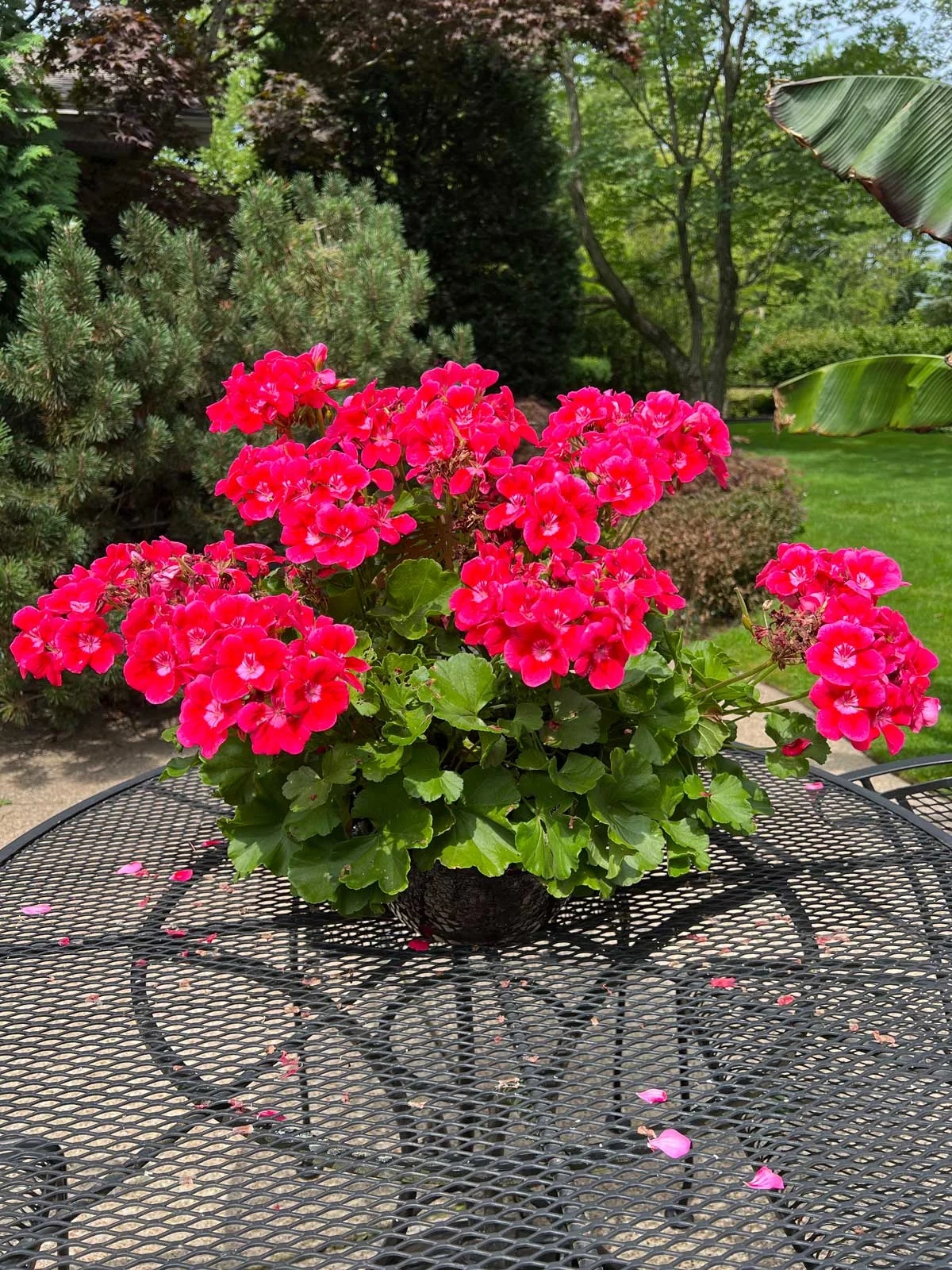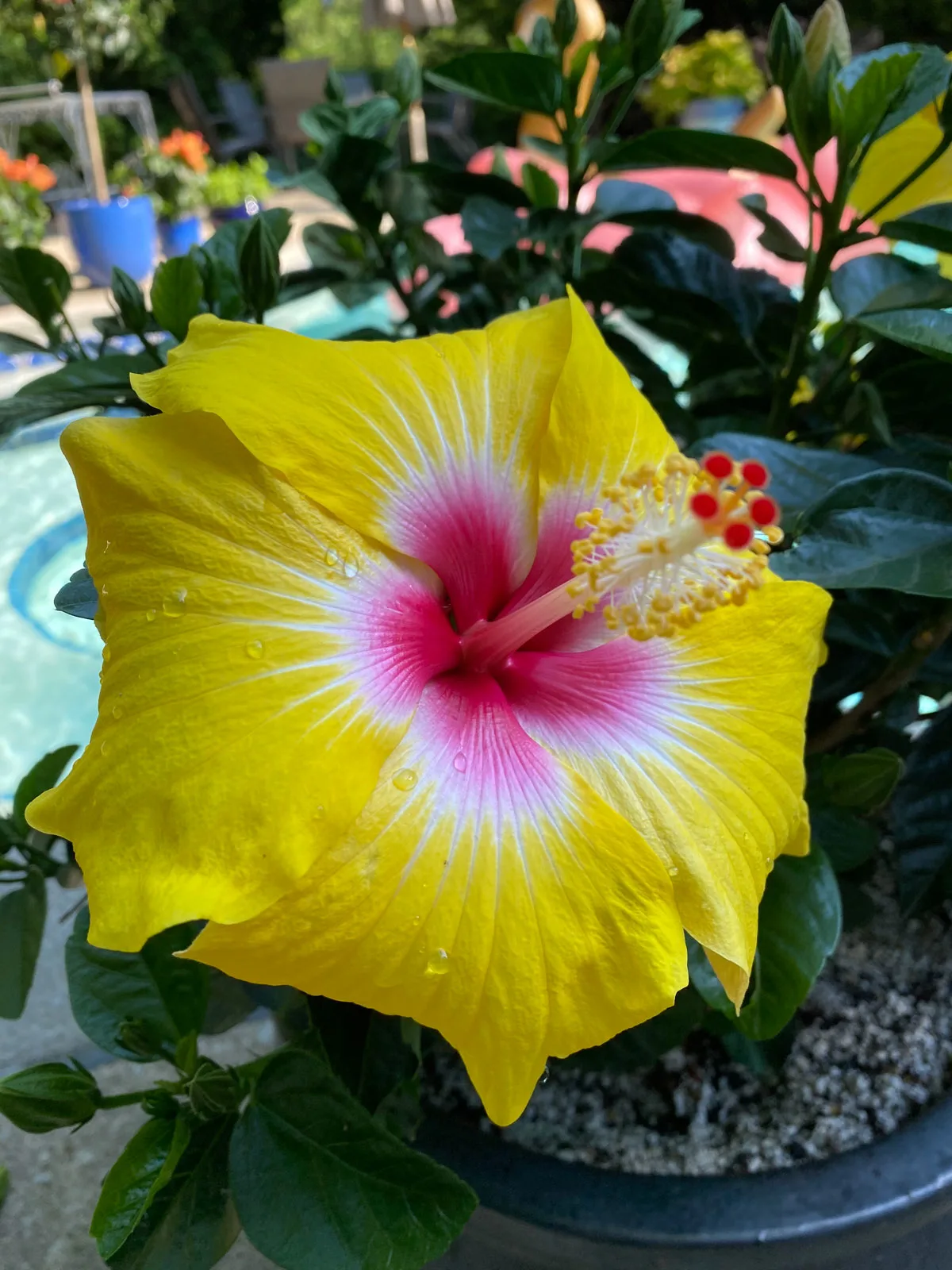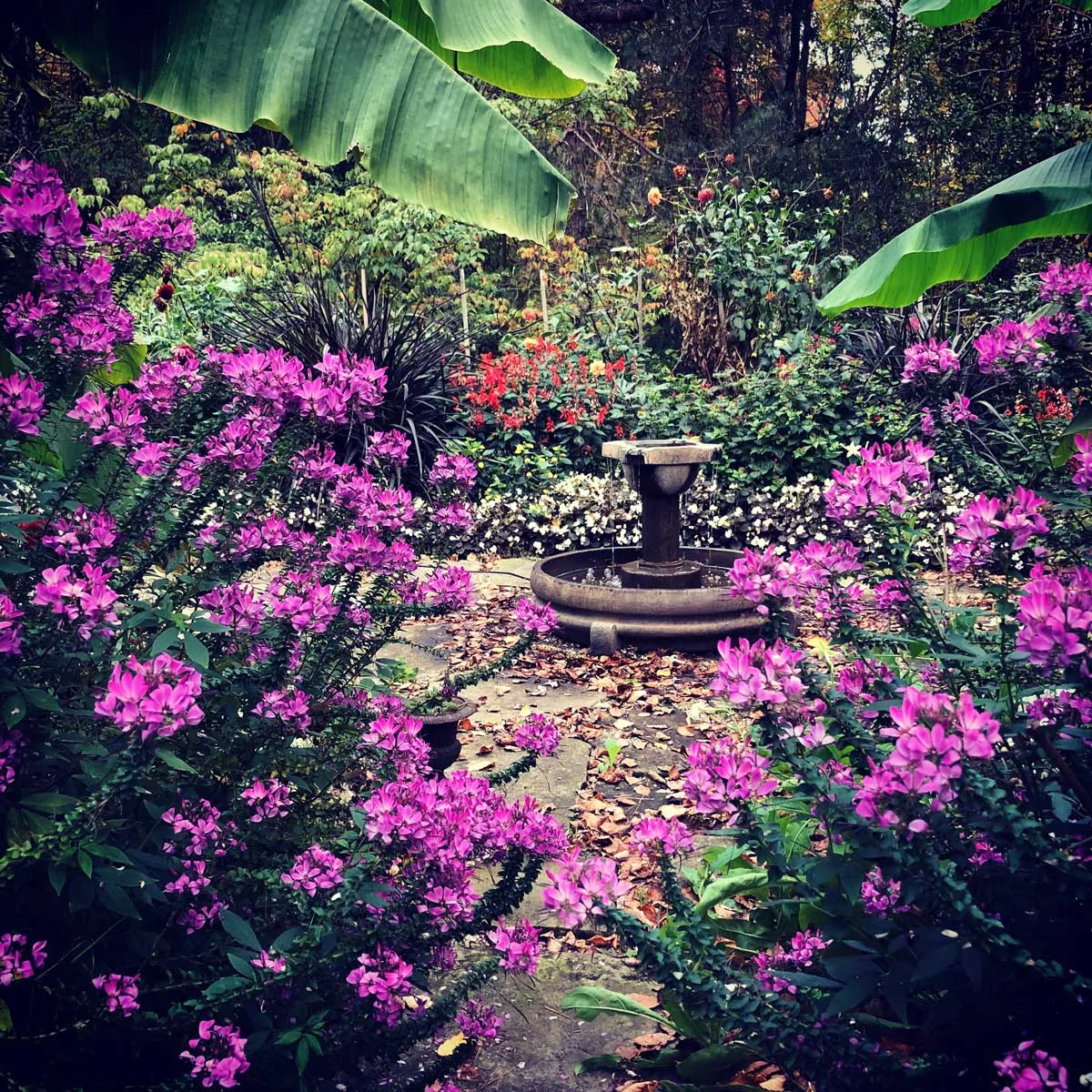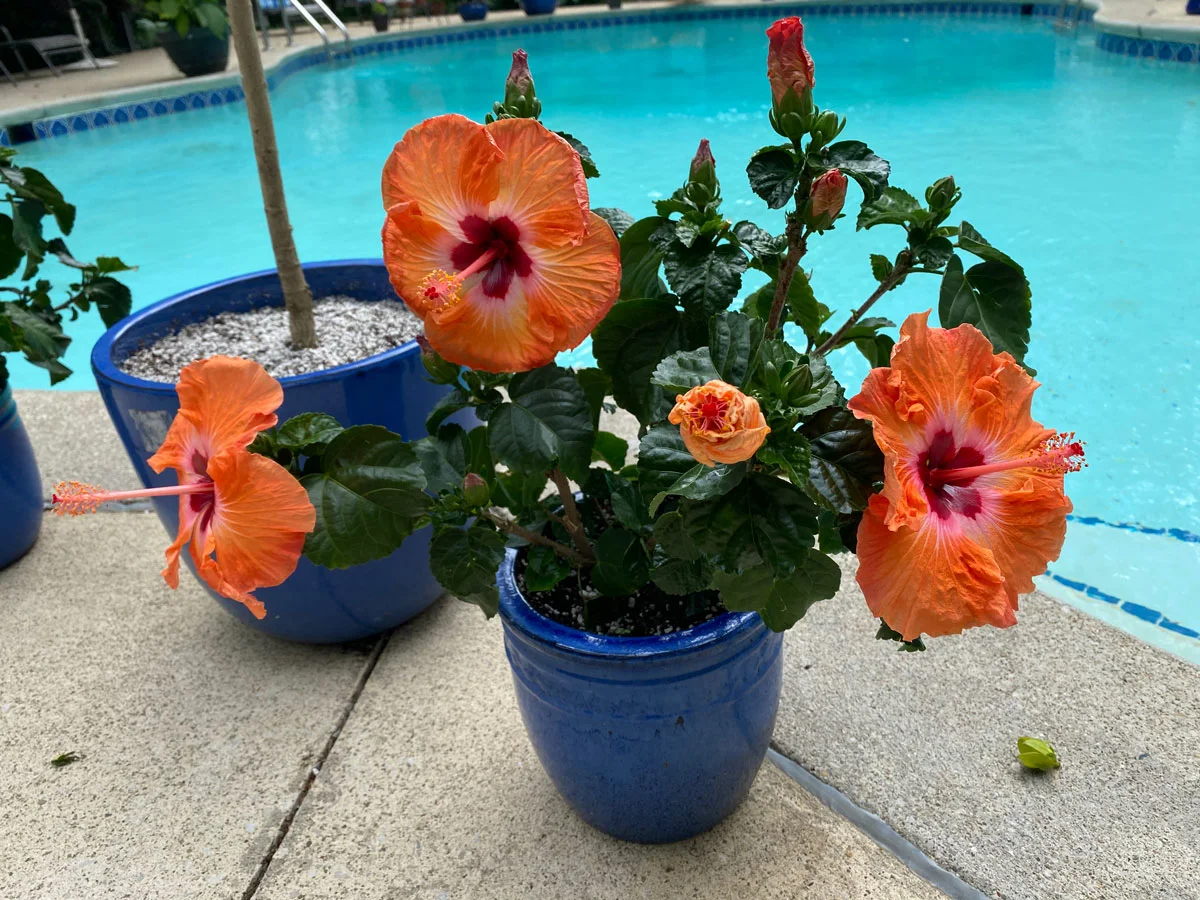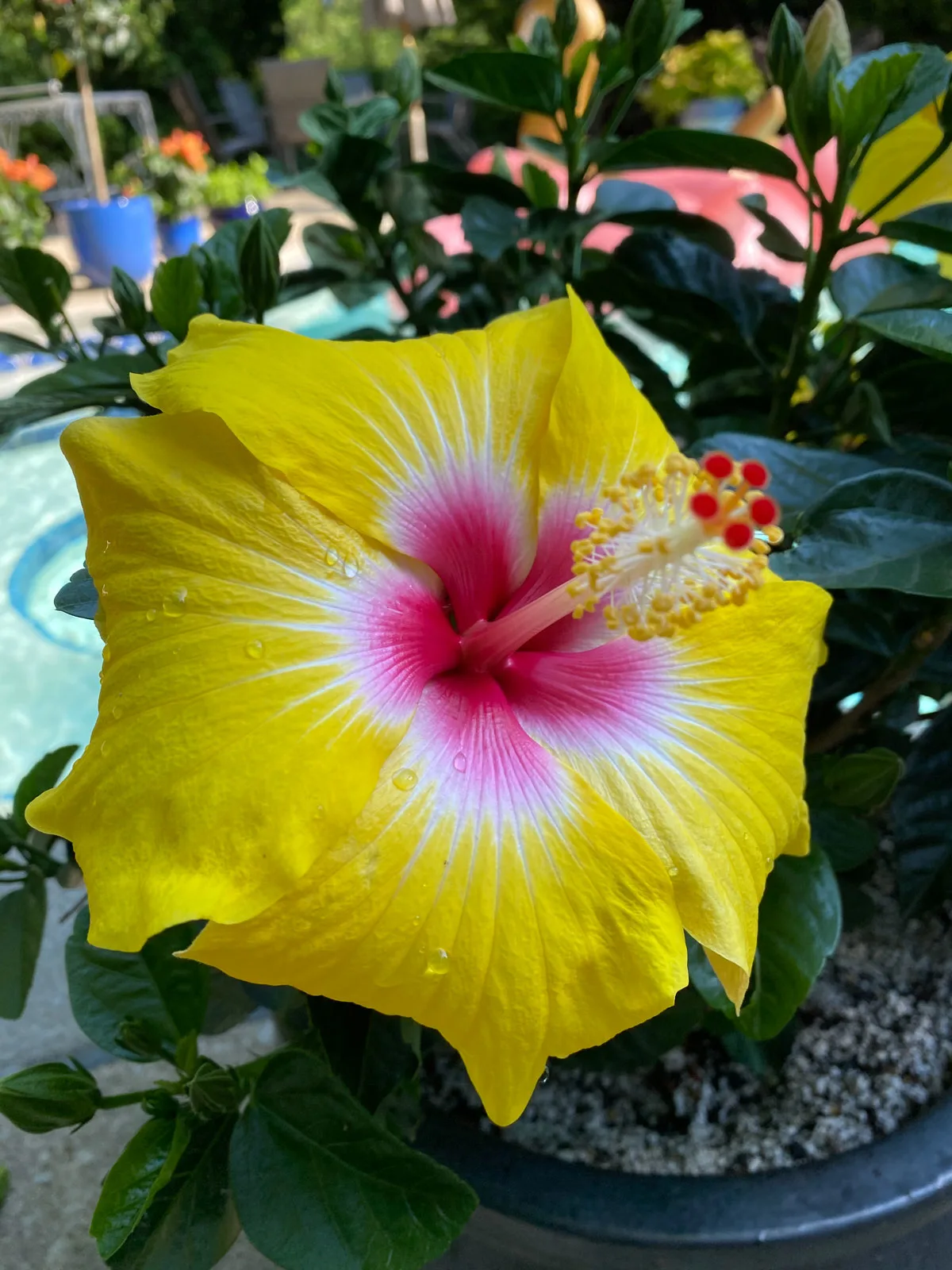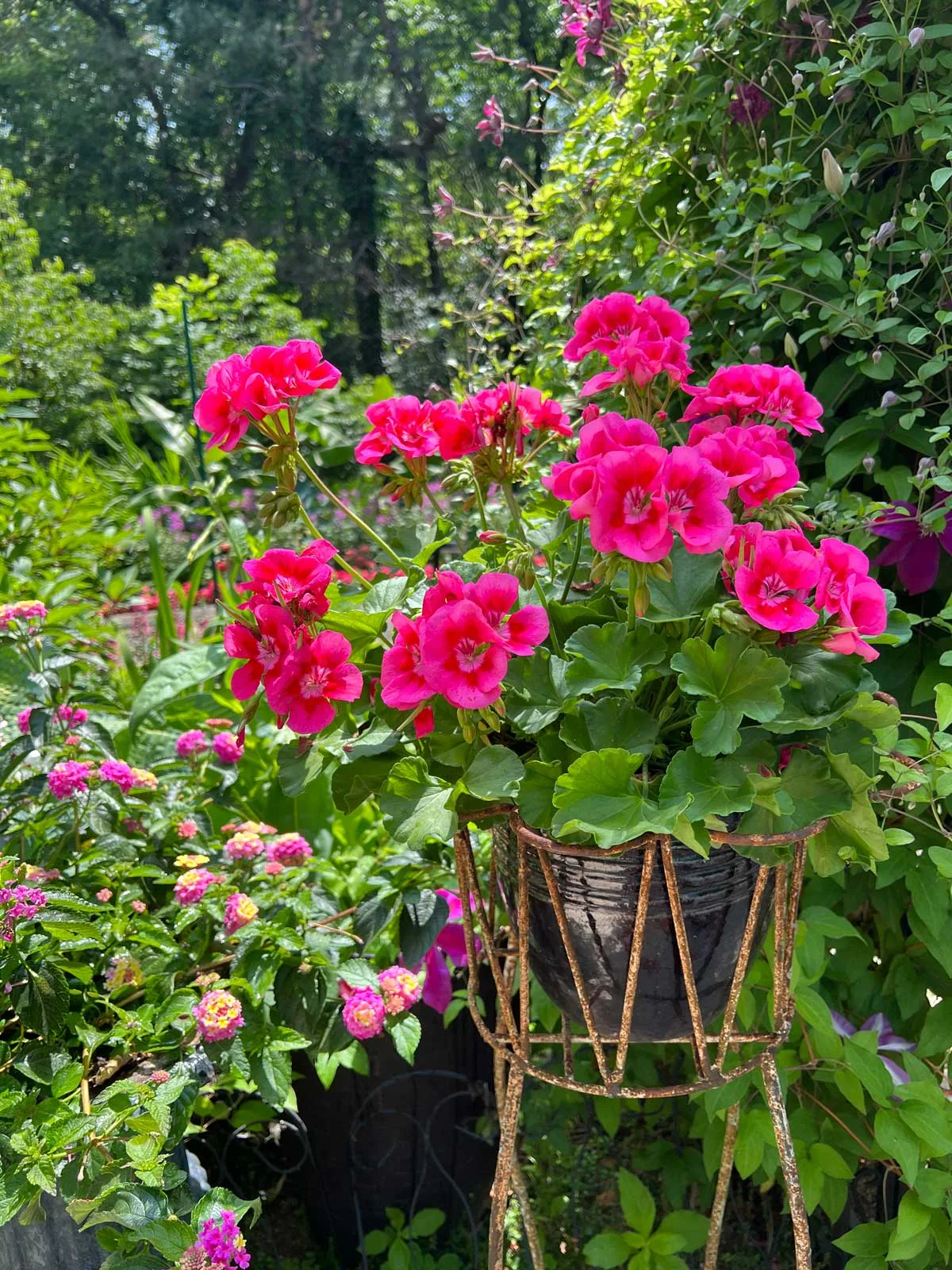Some of the links in this post may be affiliate links.
Are hibiscus plants annuals or perennials? In this post, I’ll answer this question in more detail and make it easy to understand exactly how to tell what type of hibiscus you have growing in your garden or in your pots.
Regardless of what type you grow, they all produce beautiful, showy flowers for a long season of bloom.
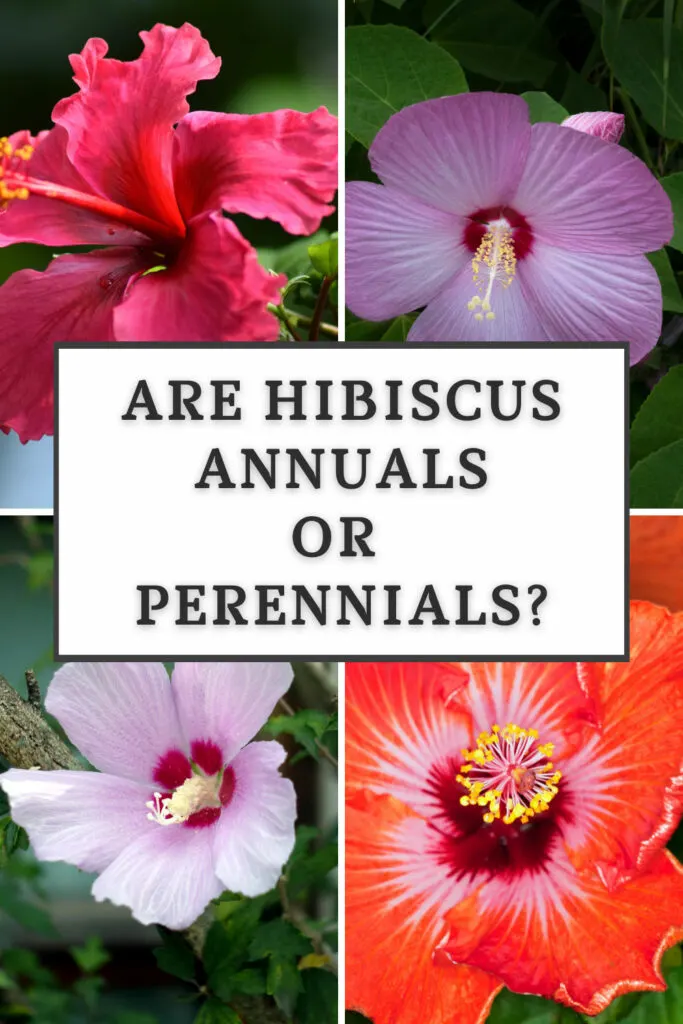
Table of Contents
ARE HIBISCUS PLANTS ANNUALS OR PERENNIALS?
There are three commonly grown types of hibiscus, and all of them are perennial plants, but depending on the climate that you live in, they may act as annuals. I explain this more in detail in the following sections.
All of them enjoy full sun though and reward us with plentiful flowers, even though individual flowers only last about a day or so.
The hibiscus genus actually contains about 434 species of plants, but here are the three broad types that are popular in home gardening.
TROPICAL HIBISCUS PLANTS
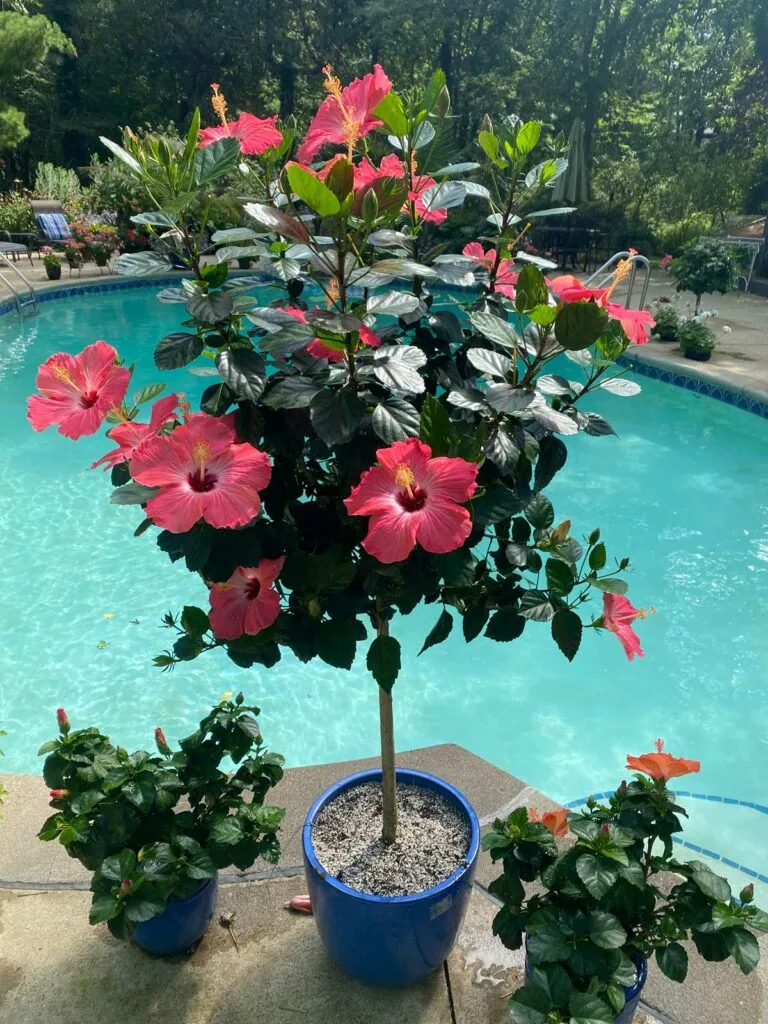
When most people think of hibiscus, they normally think of tropical hibiscus. These tropical plants are native to Vanuatu which are islands in the southwestern Pacific Ocean, east of Australia.
They have been introduced to many tropical regions of the world though and have naturalized in many warm locations.
Tropical hibiscus varieties that we buy in garden centers are usually hybrids of Hibiscus rosa-sinensis which are crossed with a few other hibiscus species.
These plants typically will only survive in USDA zone 9 and above. They don’t like when nighttime temperatures go below 50°F (10°C) and will die when temperatures approach freezing.
If you’re not sure what USDA growing zone you live in, check out this USDA plant hardiness zone map where you can enter your zip code and find out!
In a northern climate, or in any growing zones below zone 9 or 10, they will not survive the winter so many people treat them as annuals. But it warmer climates, they will be perennial.
Frost will kill these plants, but you can easily overwinter hibiscus and keep them year after year if you grow them in pots and move them indoors.
You can either keep them growing indoors in a sunny window during the winter season, or let them go dormant in a cool, dark area.
Even in cold winter climates, with good care, you should have a constant display of beautiful flowers through late summer and early fall, and even beyond. Be sure not to miss my post on how to get hibiscus to bloom.
The flowers come in a variety of colors including pink, orange, red, yellow and more. In cooler climates, they make excellent container plants and are best grown in pots where you can control the growing conditions better, particularly the soil and moisture requirements.
This is also very helpful if you plan on moving your plants to overwinter them in the house or in a protected location.
ROSE OF SHARON
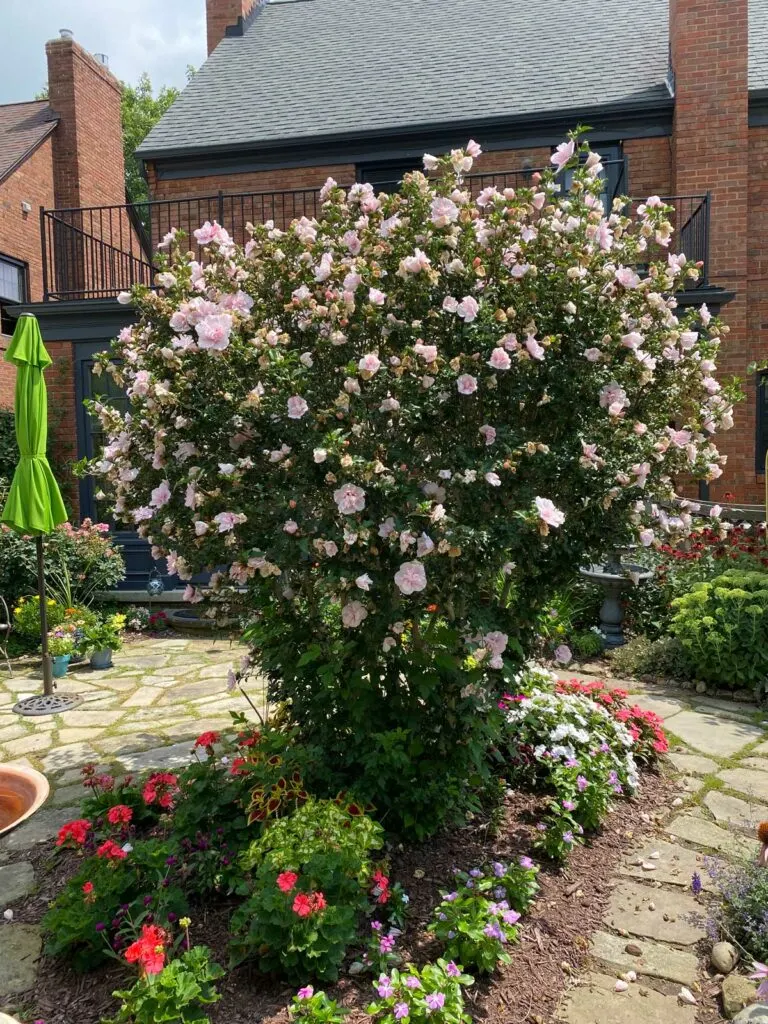
This prolific garden plant goes by the botanical name, Hibiscus syriacus and is native to southern China and Taiwan. These plants are deciduous perennial shrubs that can grow up to about a dozen feet tall or so. They develop woody stems and trunks.
Like their tropical counterparts, the flowers only last one day, but these summer-blooming plants produce a staggering amount of flowers.
They are typically hardy down to zone 5 and are thus very popular garden plants for those of us that live in cold weather climates.
The plant reseeds rather abundantly, so if you grow this plant in your garden, you’ll likely find seedlings popping up all over the place.
It is very tolerant of hot weather, drought, and pollution, which explains why it has naturalized itself in many locations.
Rose of Sharon flowers look similar to tropical hibiscus flowers, except they are much smaller in size.
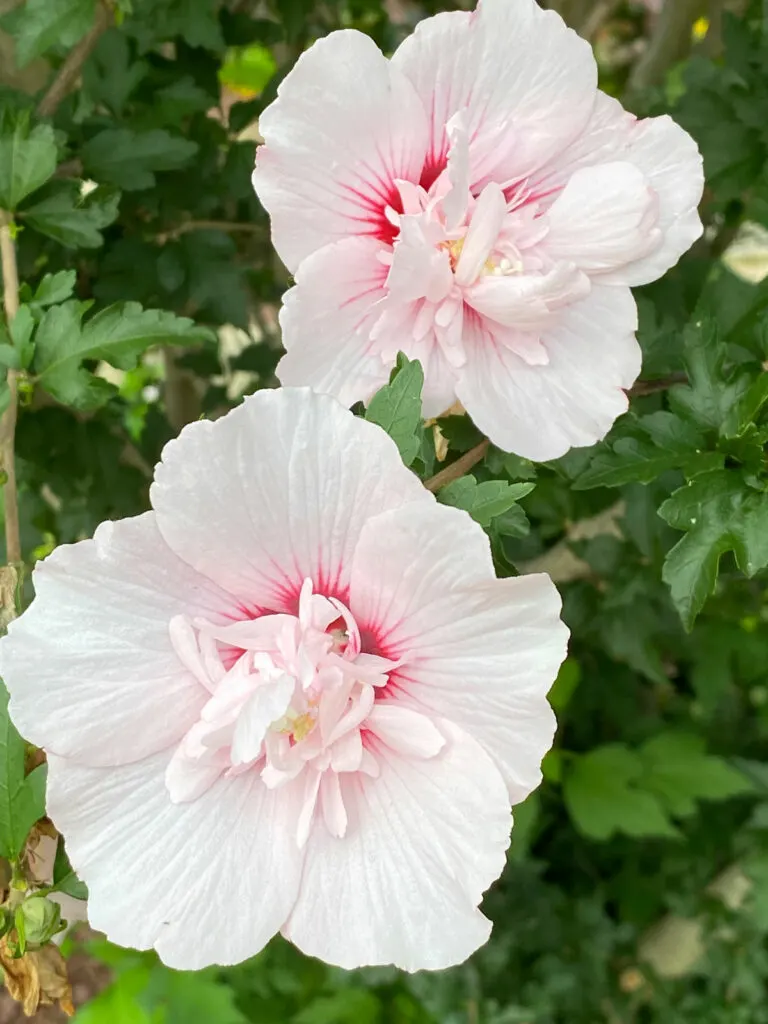
Most rose of sharon plants will have single flowers like in the photo below.
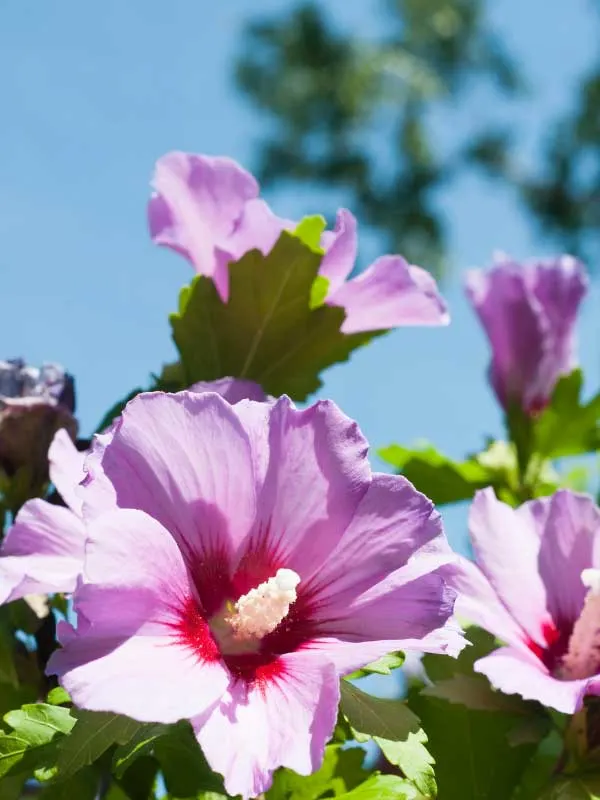
ROSE MALLOW
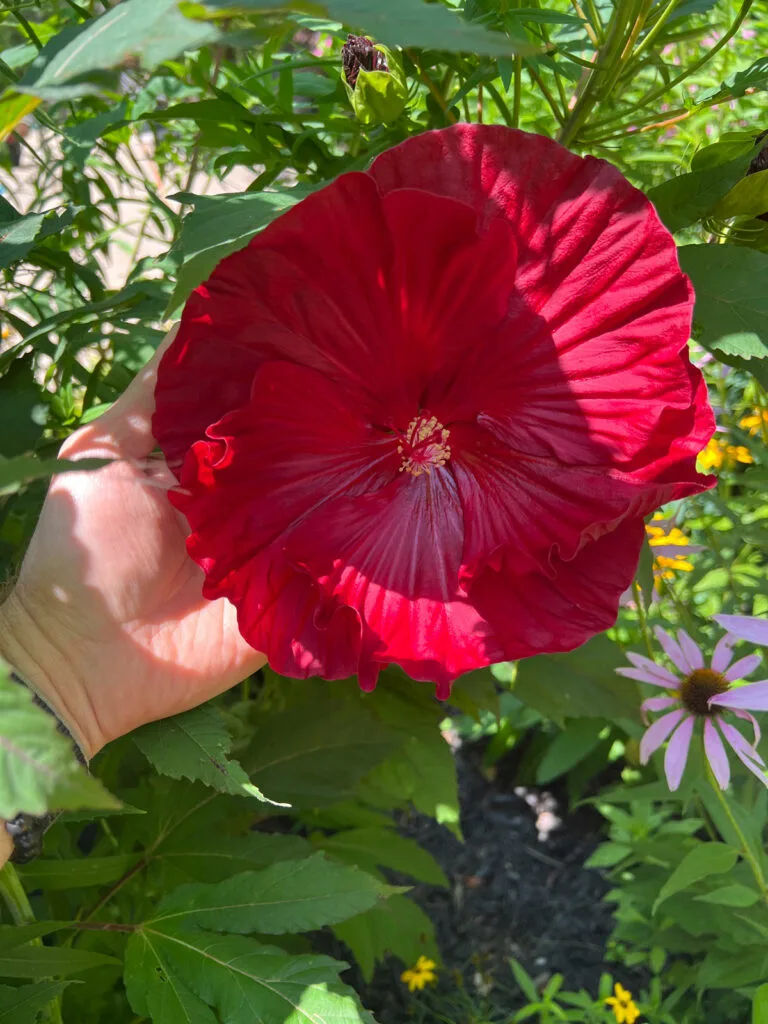
Hibiscus moscheutos is a species of hibiscus that is native to parts of Canada and much of central and eastern United States, as well as some other areas of the U.S.
Common names include rose mallow, swamp mallow, and common mallow.
These plants are wetland plants so they naturally grow in wet soil, making these perfect plants for sunny areas that don’t have well-drained soil! They even grow well in clay soil!
In the garden, be sure to provide plenty of water because these are not terribly drought-tolerant plants.
The rose mallows that are typically sold in garden centers are hybrids of Hibiscus moscheutos crossed with some other hibiscus species.
The large blooms are striking, and many varieties have flowers that are almost dinner plate size. Many of the flowers are substantially larger than tropical hibiscus flowers. Each flower lasts about 1-2 days.
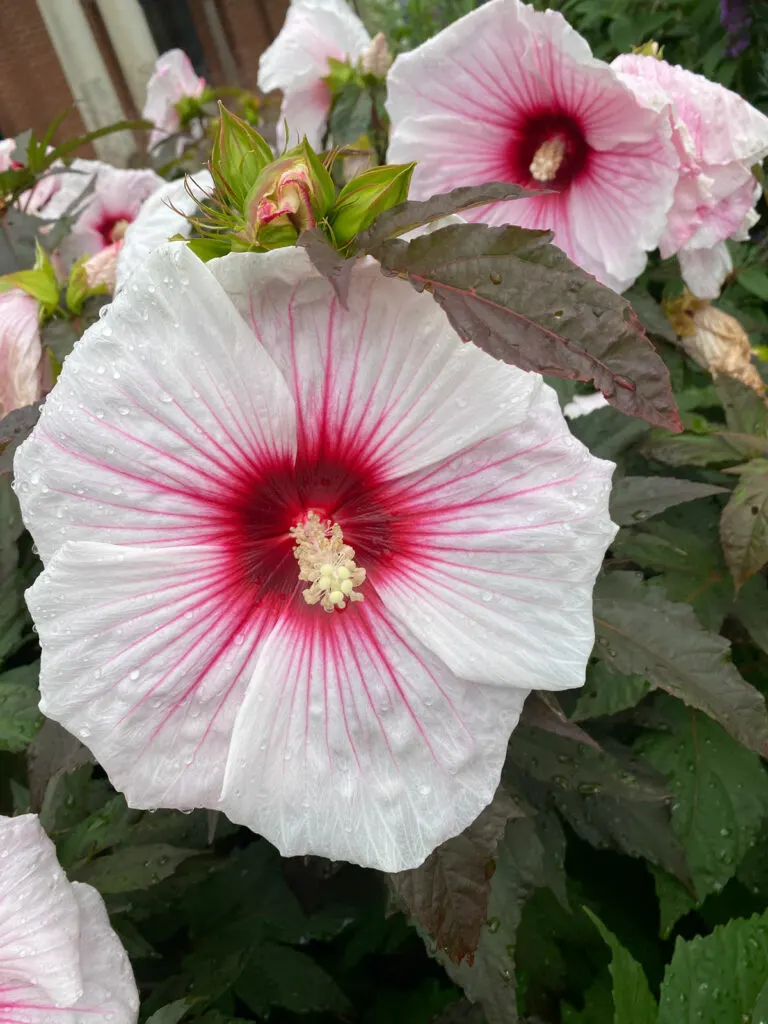
These perennial hibiscus plants are typically hardy down to zone 4, so they’re perfect for cold winter climates.
Unlike Rose of Sharon which is a shrub or small tree, Rose Mallow will die all the way back to the ground.
It typically emerges with new growth in mid to late spring. The new growth will come right out of the soil and emerge later than most perennials, so don’t lose hope!
The old canes die back completely, so you can cut these down close to the soil line in early spring.
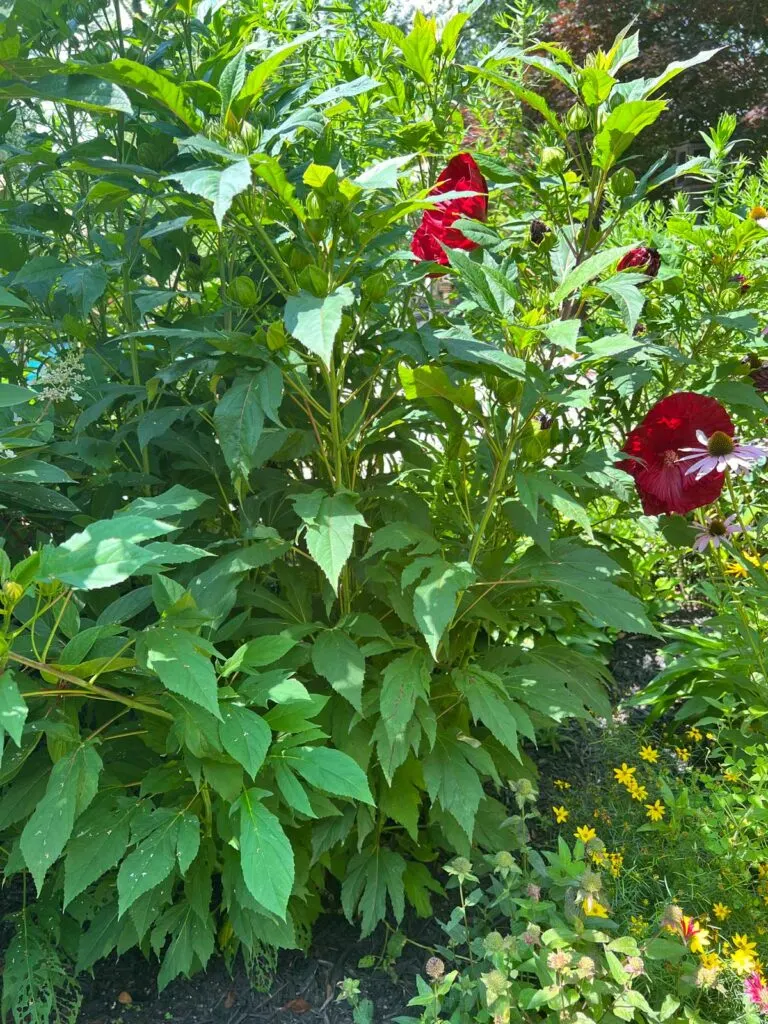
So, are hibiscus plants annuals or perennials? The short answer is that they are perennials, but if they are not hardy in your growing zone, they will act as annuals.
Do you grow any hibiscus varieties? Comment below. I’d love to hear!

